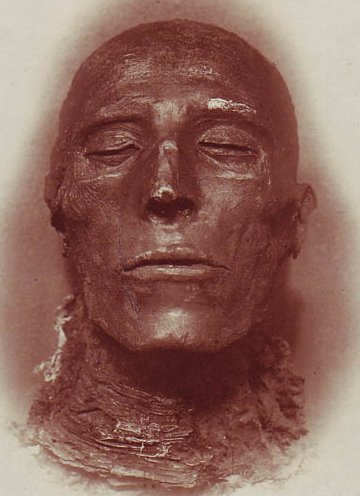Tuesday, October 22, 2013
Blogging Marvel Comics’ Dracula, Lord of the Undead
Marvel Comics quickly responded to the news that the creative team behind the legendary Tomb of Dracula series had moved over to Dark Horse to relaunch the property as Curse of Dracula. Marvel put together their own creative team to try to give fans of the original series what they wanted. Glenn Greenberg wrote the script for the three-part Dracula, Lord of the Undead limited series and Pat Olliffe provided artwork that recalled Gene Colan’s work. Colan’s original inker, Tom Palmer was back on board as well and his contributions cannot be underestimated (and were very much lacking in the Dark Horse series).
The story opens in contemporary Transylvania where Dracula still terrorizes the locals. The scene quickly shifts to London where we meet Dr. Charles Seward, great grandson of Dr. John Seward who fought alongside Abraham Van Helsing to combat Dracula in the late 19th Century. Young Seward is a research scientist whose marriage is falling apart due to his obsessive devotion to his research.
Seward’s mysterious and sinister employer has hired him to develop a cure for vampirism. To this end, his employer has recently ransacked Castle Dracula and successfully captured a vampire to serve as a guinea pig. Seward’s serum makes blood indigestible for vampires dooming them to starvation, but it also unleashes a highly contagious blood disease that threatens to wipe out the human race.
TO CONTINUE READING THIS ARTICLE, PLEASE VISIT THE BLACK GATE ON FRIDAY, NOVEMBER 1.
Monday, October 21, 2013
Blogging Dark Horse Comics’ The Curse of Dracula
Marvel Comics’ long-running Tomb of Dracula series by Marv Wolfman and Gene Colan was a landmark in the medium. The award-winning series set a standard in the industry that is still felt four decades on. Marvel shamefully squandered their efforts to turn the controversial monthly title into an adult-oriented comic magazine free from the strictures of the Comics Code Authority. A dozen years later, the duo reunited to revive the series for Marvel’s Epic Comics line, but this highly underrated four-part limited series was not granted the accolades or the follow-up it deserved. Flash forward to 1998 and Dark Horse Comics offered Wolfman and Colan a three-part limited series to reinvent the property for the up and coming rival in the field.
The only tragedy is that The Curse of Dracula ended up being another one-shot limited series despite the storyline’s potential to be expanded further. Much of the Dark Horse series recalls the story and artwork in the Epic Comics limited series from earlier in the decade. The plot is equally complex and adult and the art pushes the boundaries to the edge yet again. Once again, Marv Wolfman is crafting a new set of vampire hunters and has Dracula rooted in the world of politics.
The new protagonists are an interesting lot led by Jonathan Van Helsing, a cerebral but physically unchallenging character whose vocal chords were destroyed by vampires ten years before. Jonathan is the CEO of Sunlight Industries and is a regular feature on the television talk show and convention circuit. His father and grandfather died staking Count Dracula at his castle in Italy in 1979. Sadly, Jonathan learns the vampire has been resurrected. He prays after each battle, not for his own lost soul, but to retain his sanity after the atrocities he has witnessed and committed.
TO CONTINUE THIS ARTICLE, PLEASE VISIT THE BLACK GATE ON FRIDAY.
Wednesday, October 16, 2013
The Blob - The Making of a Classic B-Movie
The nostalgia for the 1950s has been with us for over forty years now. Blame George Lucas and American Graffiti (actually set during the Kennedy administration, but responsible for engendering nostalgia for the previous decade) for making us so fondly recall the birth of rock ‘n’ roll and the popularity of sock hops, drive-in movies, and the introduction of a fad for 3-D movies that is currently enjoying its third vogue, appropriately enough.
The popular mindset tends to ignore the influential role played by be-bop jazz, the beat poets, film noir’s move to television, and the introduction of Cinemascope in the same decade. Beneath the artificially clean post-war American dream where everyone on the big screen and small screen appeared to be white, upper middle class and enjoying cocktails and cigarettes with no ill effects while watching Rock Hudson pursuing a virginal Doris Day, there were the McCarthy witch hunts, the Red scare, atomic fears, juvenile delinquency, and shell-shocked WWII veterans unable to readjust to civilian life.
It was in this world that the third wave of the horror film took hold. The steadily growing move from splitting the atom to racing to the moon saw science fiction take a steady hold on the genre that took it far from the space fantasy of decades past into an allegorical means of confronting the dark fears behind the baby boomers’ dream world. One of the most potent and influential b-movies to fill drive-ins during the late 1950s was The Blob.
TO CONTINUE READING THIS ARTICLE, PLEASE VISIT THE BLACK GATE ON FRIDAY.
Labels:
1950s,
B-movie,
cult classic,
horror,
nostalgia,
science fiction,
The Blob,
Wes Shanks
Subscribe to:
Comments (Atom)


.jpg)